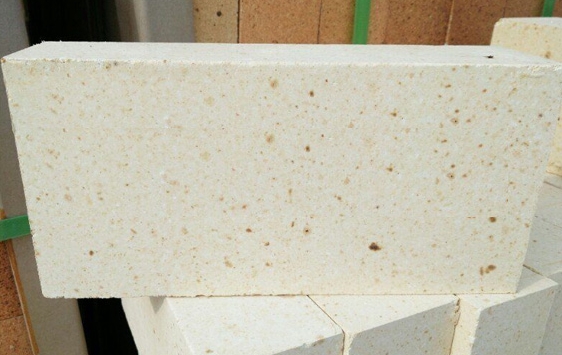- 16
- Sep
高鋁磚
高鋁磚

A. High alumina brick application
Mainly used for lining of blast furnaces, hot blast furnaces, electric furnace tops, blast furnaces, reverberatory furnaces, and rotary kilns. In addition, 高鋁磚s are also widely used as open hearth regenerative checker bricks, plugs for pouring systems, nozzle bricks, etc. However, the price of high alumina bricks is higher than that of clay bricks, so it is not necessary to use high alumina bricks where clay bricks can meet the requirements. To
B. Performance of high alumina bricks:
(1) Refractoriness
高鋁磚的耐火度高於粘土磚和半矽磚,可達1750~1790℃,屬於高級耐火材料。 耐火度主要受Al2O3含量、種類和數量的影響,耐火度隨著Al2O3含量的增加而增加。
(2) Load softening temperature:
由於高鋁磚Al2O3高,雜質少,易熔玻璃體少,荷重軟化溫度比粘土磚高。 但由於莫來石晶體不形成網狀結構,荷重軟化溫度仍不如矽磚高。
(3) Thermal conductivity:
高鋁磚比粘土磚具有更好的導熱性。 原因是高鋁製品中導熱係數低的玻璃相較少,而導熱係數較好的莫來石和剛玉晶體數量增多,提高了製品的導熱係數。
(4) Thermal shock resistance:
高鋁磚的抗熱震性介於粘土製品和矽質製品之間。 850℃的水冷循環僅為3~5次。 這主要是因為剛玉比沒有晶體轉變的莫來石具有更高的熱膨脹係數。 目前可以通過改善產品的顆粒結構,降低細粉含量,增加熟料的臨界粒徑和顆粒級配來提高產品的抗熱震性。
(5) Slag resistance:
高鋁磚含有較多的Al2O3,接近中性耐火材料,能抵抗酸性渣和鹼性渣的侵蝕。 由於含有SiO2,抗鹼性渣的能力弱於酸性渣。 此外,高鋁磚的抗渣性也與產品在渣中的穩定性有關。 一般來說,經過高壓成型和高溫燒製後,孔隙率較低的產品具有較高的抗渣性。
The parameter index of high alumina bricks varies widely, and its physical properties should be determined according to the grade of the product and the place of use when it is used. At present, the general high alumina brick standard GB2988-88 is generally adopted. If you need to use super high alumina bricks, please refer to GB/T 2988-2012 standard physical and chemical indicators. The index of high alumina brick is the basic performance requirement. According to the conditions of use, creep resistance and thermal shock resistance should also be considered. The chemical resistance directly depends on the A12O3 content and porosity.
(6) Physical and chemical indicators:
| 排名/指數 | 高鋁磚 | 二次高鋁磚 | 三層高鋁磚 | 超高鋁磚 |
| LZ-75 | LZ-65 | LZ-55 | LZ-80 | |
| AL203 ≧ | 75 | 65 | 55 | 80 |
| Fe203% | 2.5 | 2.5 | 2.6 | 2.0 |
| 堆積密度g / cm2 | 2.5 | 2.4 | 2.2 | 2.7 |
| 常溫抗壓強度 MPa> | 70 | 60 | 50 | 80 |
| 荷重軟化溫度 °C | 1520 | 1480 | 1420 | 1530 |
| 耐火度°C> | 1790 | 1770 | 1770 | 1790 |
| 表觀孔隙率% | 24 | 24 | 26 | 22 |
| 加熱恆線變化率% | -0.3 | -0.4 | -0.4 | -0.2 |
